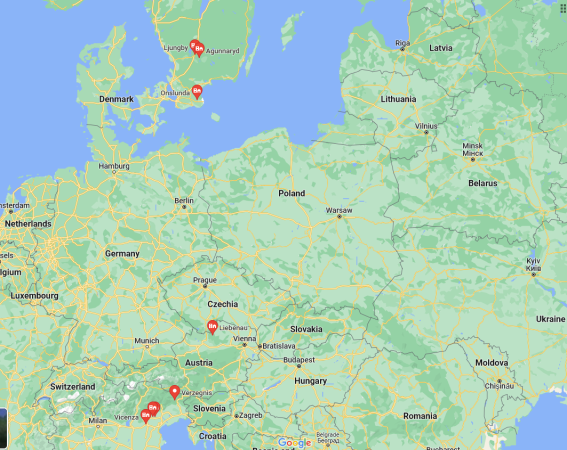Palermo Trapani
Regular Member
- Messages
- 1,655
- Reaction score
- 928
- Points
- 113
- Ethnic group
- Italian-Sicily-South
- Y-DNA haplogroup
- I2-M223>I-Y5362
- mtDNA haplogroup
- H2A3
I believe the evidence is now strongly suggesting that Proto-Germanic is directly associated with Corded Ware. The Corded War or proto-Germanic consist heavily of I1 and R1A Haplogroups, correct. How much of those are in Italy today and when did they arrive? Not that many from what I can tell. Maybe a combined 6-8%. So it is there but 20%? Hmmmm, not sure. And again when did I1 and R1a arrive, I would think after the collapse of the Roman Empire in the West circa late 4th/early 5th century.
Some of the R1-M269/L51 that are also lined to Proto-Germanic are through Bell Beaker Intermediaries correct? R1-M269/L51>U106 is the Y Haplogroup among Bell Beakers associated with Germanic. How many of the Iron Age samples from the Antonio et al 2019 (Latins) and Posth et al 2021 (Etruscans) papers have those markers?
From what I gathered only 1 sample from the Posth et al 2021 paper labeled TAQ13 (See Table S1) is positive for the U106 marker. That sample is an Etruscan but the date is not provided (couldn't accurately carbon date I would suspect). None of the Iron Age Romans in the Antonio et al 2019 paper.
And finally, and I am going to word it carefully. Lets say there were indeed there were other R1-M269/L51/U106/S21 markers found in Iron Age Italy, who is to say they did not look like the Late Joseph Ratzinger (Pope Benedict XV1) who hailed from Southern Germany (Bavaria). Why assume any Germanic markers from the Iron Age only looked like Germanics from Saxony or what today is Denmark, which is where the Anglo-Saxons come from (DNA evidence supporting that). It could be that those Anglo-Saxon associated phenotypes did not become more prominent until the Germanic invasions starting in the late 4th and continuing till the 5th century as the Western Roman Empire collapsed.
Some of the R1-M269/L51 that are also lined to Proto-Germanic are through Bell Beaker Intermediaries correct? R1-M269/L51>U106 is the Y Haplogroup among Bell Beakers associated with Germanic. How many of the Iron Age samples from the Antonio et al 2019 (Latins) and Posth et al 2021 (Etruscans) papers have those markers?
From what I gathered only 1 sample from the Posth et al 2021 paper labeled TAQ13 (See Table S1) is positive for the U106 marker. That sample is an Etruscan but the date is not provided (couldn't accurately carbon date I would suspect). None of the Iron Age Romans in the Antonio et al 2019 paper.
And finally, and I am going to word it carefully. Lets say there were indeed there were other R1-M269/L51/U106/S21 markers found in Iron Age Italy, who is to say they did not look like the Late Joseph Ratzinger (Pope Benedict XV1) who hailed from Southern Germany (Bavaria). Why assume any Germanic markers from the Iron Age only looked like Germanics from Saxony or what today is Denmark, which is where the Anglo-Saxons come from (DNA evidence supporting that). It could be that those Anglo-Saxon associated phenotypes did not become more prominent until the Germanic invasions starting in the late 4th and continuing till the 5th century as the Western Roman Empire collapsed.


